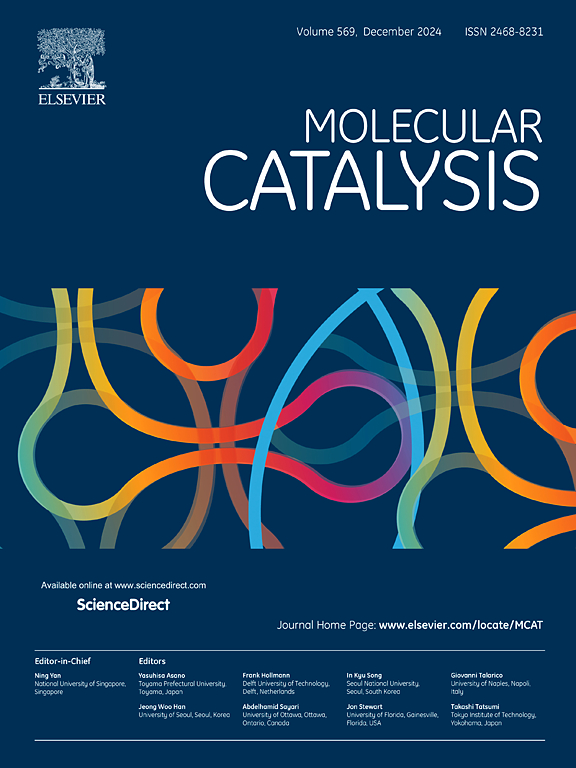位阻扫描增强β-葡萄糖苷酶BgMd活性及其在葡萄糖苷转化中的应用
IF 4.9
2区 化学
Q2 CHEMISTRY, PHYSICAL
引用次数: 0
摘要
人们对β-葡萄糖苷酶的蛋白质工程研究越来越感兴趣,以改善糖苷的转化。在这项研究中,一种新的位阻扫描策略应用于β-葡萄糖苷酶BgMd,导致6个单点突变体的活性显著增加。进一步的迭代结果表明,优化后的突变体E329K/R72N/A94H/T135H的活性比野生型提高了26.1倍。将20 g/L聚丁苷的水解时间缩短一半,转化率提高到95.93%。突变体A94T/V336T在48 h内水解2 g/L人参皂苷Rba1生成CK,产量从26.94%提高到76.38%。突变体E329N在48 h内可水解2 g/L黄芪甲苷,产量由30.19%提高到96.23%。BgMd和突变体在50-60°C和pH 7.0条件下表现出最佳活性,具有增强的稳定性和耐受性。分子对接和分子动力学分析表明,底物袋被一分为二,这在很大程度上解释了突变体的催化作用。分子动力学模拟提供了突变体结构变化和相互作用能量降低的证据。这些结果验证了位阻策略是应用β-葡萄糖苷酶进行糖苷生物转化的有效方法。本文章由计算机程序翻译,如有差异,请以英文原文为准。

Steric hindrance scanning for activity enhancement of β-glucosidase BgMd and its application in glucoside transformation
There is increasing interest in the protein engineering of β-glucosidases for improving transformation of glycosides. In this study, a novel steric hindrance scanning strategy is applied to β-glucosidase BgMd, resulting in six single-point mutants with significantly increased activity. Further iteration results in the optimized mutant E329K/R72N/A94H/T135H showed a remarkable 26.1-fold improvement in activity over the wild type. The time needed for the hydrolysis of 20 g/L polydatin is cut in half, and the conversion rate is increased to 95.93 %. Mutant A94T/V336T hydrolyzes 2 g/L of ginsenoside Rba1 in 48 h to generate CK with a yield increase from 26.94 to 76.38 %. The mutant E329N hydrolyses 2 g/L of astragaloside in 48 h with a yield increase from 30.19 to 96.23 %. BgMd and mutants exhibit optimal activity at 50–60 °C and pH 7.0, with enhanced stability and improved tolerance in select mutants. Molecular docking and molecular dynamics showed that the substrate pocket is split in two, and the catalytic effect of the mutants is largely explained. Molecular dynamics simulations provided evidence of structural changes and reduced interaction energies in the mutants. These results validate the steric hindrance strategy as an effective method to apply β-glucosidase in the biotransformation of glycosides.
求助全文
通过发布文献求助,成功后即可免费获取论文全文。
去求助
来源期刊

Molecular Catalysis
Chemical Engineering-Process Chemistry and Technology
CiteScore
6.90
自引率
10.90%
发文量
700
审稿时长
40 days
期刊介绍:
Molecular Catalysis publishes full papers that are original, rigorous, and scholarly contributions examining the molecular and atomic aspects of catalytic activation and reaction mechanisms. The fields covered are:
Heterogeneous catalysis including immobilized molecular catalysts
Homogeneous catalysis including organocatalysis, organometallic catalysis and biocatalysis
Photo- and electrochemistry
Theoretical aspects of catalysis analyzed by computational methods
 求助内容:
求助内容: 应助结果提醒方式:
应助结果提醒方式:


